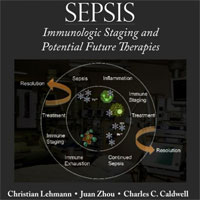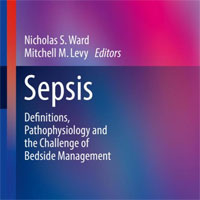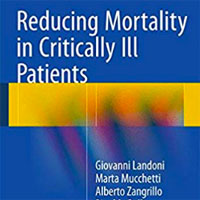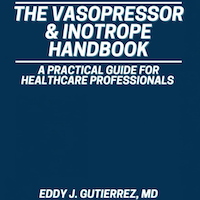Tag: thromboembolism
ARDS and High Blood Endocan Profile During COVID‑19
With great interest, we read the recently published paper by Pascreau et al. concluding that a high blood endocan profile during COVID‑19 distinguishes moderate from severe acute respiratory distress syndrome (ARDS). In... read more
Nitrous Oxide Avoidance for Patients Undergoing Major Surgery
Avoidance of nitrous oxide and the concomitant increase in inspired oxygen concentration decreases the incidence of complications after major surgery, but does not significantly affect the duration of hospital stay. The... read more
Ambulation Alone Not Effective Prophylaxis for Venous Thromboembolism
Our systematic review failed to find high-quality evidence to suggest that ambulation alone is an appropriate or effective prophylaxis for venous thromboembolism. Although some studies suggest that ambulation may reduce... read more
Venous Thromboembolism Prophylaxis in Critically Ill Adults
Among critically ill adults, compared to control, low molecular weight heparin (LMWH) reduces incidence of deep venous thrombosis (DVT) while UFH and mechanical compressive devices may reduce risk of DVT. LMWH is probably... read more
Is Daily Enoxaparin Dosing As Good As Twice Daily?
Venous thromboembolism (VTE) remains a big problem for trauma professionals and the patients they take care of. Every trauma center has some sort of VTE prophylaxis protocol for stratifying risk, prescribing mechanical... read more
Vaccine-Induced Prothrombotic Immune Thrombocytopenia After AstraZeneca COVID-19 Vaccination
The United Kingdom, European Union, and Scandinavian countries have reported that the AstraZeneca COVID-19 vaccine appears to be associated with rare cases of serious blood clots, including blood clots in the brain. These... read more
Key Topics in Critical Care
High quality critical care medicine is a crucial component of advanced health care. Completely revised and updated, Key Topics in Critical Care, Second Edition provides a broad knowledge base in the major areas of critical... read more
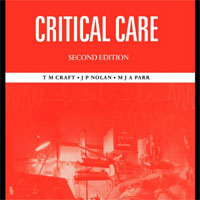
RAPID UPDATE: Clinical Guide for the Management of Critical Care for Adults with COVID-19
This RAPID UPDATE to the FICM/ICS "Clinical guide for the management of critical care for adults with COVID-19 during the Coronavirus pandemic" highlights five clinically urgent issues for practising clinicians caring for... read more
Management of Post-acute COVID-19 in Primary Care
Post-acute COVID-19 ("long covid") seems to be a multisystem disease, sometimes occurring after a relatively mild acute illness. Clinical management requires a whole-patient perspective. This article, intended for... read more
Post-Hospital VTE in Patients with COVID-19
The authors concluded that the rate of post-hospital venous thromboembolism (VTE) among patients with COVID-19 is low and that routine post-hospital prophylaxis is not necessary. Of the 1,877 hospital admissions with COVID-19... read more
Pulmonary Embolism in COVID-19 Patients in France
Pulmonary embolism (PE) in the context of coronavirus disease 2019 (COVID-19) appears to be driven largely by inflammation and coagulopathy rather than by traditional risk factors for thromboembolism. Study results suggest... read more
Prophylaxis and Treatment of Venous Thromboembolic Disease in COVID-19
Patients with COVID-19 appear to be at elevated risk for thrombotic complications, including venous thromboembolism (VTE).1 In addition to traditional risk factors for VTE, indirect effects of the severity of illness as well... read more
New NICE Guidelines on VTE Management
In the midst of everything that is going on with COVID-19 it is easy to see how important non coronavirus stuff can get overlooked. But we still need to keep our eyes open. After a 3 year process involving many meetings,... read more
Renal Function-Adjusted D-Dimer Levels in Critically Ill Patients With Suspected Thromboembolism
D-Dimer cutoff levels adjusted for renal dysfunction appear feasible and safe assessing thromboembolic disease in critically ill patients. Furthermore, adjusted D-dimer cutoff levels seem reliable in patients with acute kidney... read more
Epidemiology of Clinically Relevant Bleeding in Critically Ill Adolescents
Clinically Relevant Bleeding (CRB) is common in critically ill adolescents who are at high risk of venous thromboembolism (VTE). Admission after trauma or surgery can be used to stratify the risk of CRB in this population.... read more
Blood Grouping Identifies Patients at Risk for Developing Venous Thromboembolism
Based on study of more than 28,000 TJA patients, presurgical ABO blood group testing looks like an inexpensive way to identify patents at increased risk for symptomatic postoperative VTE. Prophylaxis regimens can dramatically... read more
Parenteral Anticoagulation Not Associated with Reduced Risk of Ischemic Stroke Among Patients with Atrial Fibrillation During Sepsis
Among patients with Atrial Fibrillation (AF) during sepsis, parenteral anticoagulation was not associated with reduced risk of ischemic stroke and was associated with higher bleeding rates. Of 113,511 patients hospitalized... read more
Pulmonary Embolism Hospitalization, Readmission, and Mortality Rates in US Older Adults
Over the past 15 years, advances have occurred in the diagnosis and management of pulmonary embolism (PE).1 Computed tomographic pulmonary angiography (CTPA) is now the routine diagnostic test. The availability of risk... read more
Thromboelastography Predicts Thromboembolism in Critically Ill Coagulopathic Patients
Critically ill patients with deranged conventional coagulation tests are often perceived to have an increased bleeding risk. Whether anticoagulant prophylaxis for these patients should be withheld is contentious. This study... read more
Peripheral Vasopressors: The Myth and the Evidence
You are working in a small, rural hospital staffed by one physician and one nurse. There are multiple sick patients, all of whom require your attention, but the sickest is probably the 62 year old female with pneumonia and... read more
Antithrombotic Therapy for Venous Thromboembolic Disease
This JAMA Clinical Guidelines Synopsis summarizes the American College of Chest Physicians' 2016 recommendations on antithrombotic therapy for venous thromboembolism (VTE). The estimated annual incidence of VTE, defined... read more
EHR-guided Strategy Reduces Postop VTE Events
By incorporating algorithms into the electronic health record (EHR), UPMC was able to realize a "dramatic" 72% reduction in missed doses, from 4,331 missed doses in 2014 to 1,193 in 2015, Dr. Neal told attendees in a session... read more





